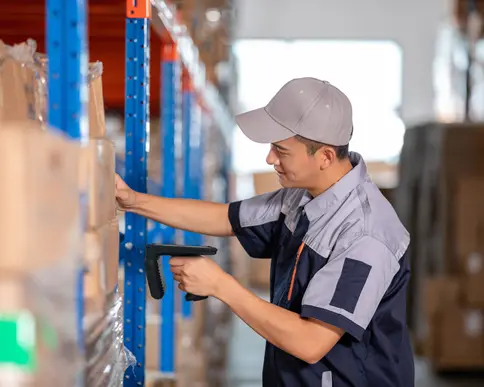Brief Introduction
In response to different on-site requirements in warehouse management, this article proposes two different traceability collection schemes. Let's take a look together.

A Solution for Improving the Efficiency of RFID Readers in Warehouse Management
RFID technology is a technology that utilizes radio signals for identification and tracking, and has been widely used in the field of warehouse management in recent years. By using RFID readers and writers, the warehouse can achieve automatic identification, positioning, and tracking of items, thereby improving the efficiency and accuracy of warehouse management.
Firstly, RFID readers can achieve automatic identification of items. Each item carries an RFID tag, and when the item passes through an RFID reader, the reader communicates with the RFID tag through radio waves and reads the information stored on the tag. Through this approach, warehouse managers can quickly and accurately understand the attributes, quantity, and location of each item, greatly improving the efficiency of warehouse management.
Secondly, RFID readers can achieve the positioning and tracking of items. In the warehouse, RFID readers can cover the entire area. When an item passes through the RFID reader, the reader will record its location information and transmit it to the warehouse management system. Through this method, warehouse managers can check the accurate location of items at any time and make necessary adjustments and management. This not only improves the management efficiency of the warehouse, but also reduces the loss and damage of items.
In addition, RFID readers can also achieve status monitoring of items. In the warehouse, RFID tags can be embedded into items and record their temperature, humidity, pressure, and other status information. When an item passes through an RFID reader, the reader will read the status information on the label and transmit it to the warehouse management system. Through this method, warehouse managers can timely understand the status of items, take corresponding measures to ensure their safety and quality.
Forklift Inbound and Outbound Solutions
Traditional forklifts are just a transportation tool, and the docking work of the staff requires the use of additional paper work orders, which is inefficient and prone to errors.
The forklift equipped with Seuic flatbed becomes an intelligent operation terminal, efficiently realizing operations such as material inbound and outbound, material loading and unloading, material movement tracking, inventory counting, etc. in the warehouse, helping the intelligent warehouse management system to achieve optimal efficiency.
Under the traditional management mode, forklift inbound and outbound operations suffer from the following difficulties:1. Standard guidance with low error rate. Introducing electronic process guidance, standardizing forklift inbound and outbound operations to eliminate bad debts and reduce error rates.
2. Real time synchronization of information. The system extends to forklift workers to timely update information and achieve graphical management of scheduling.
3. Peripheral fixation is more energy-efficient, and industrial tablets are compatible with multiple functions. The diversified fixation and recognition methods of peripherals fully meet customer needs.- The Critical Role of Mobile Computers in Warehouse Logistics2025-06-25
- Seuic Mobile Computers: Multi-Scenario Efficiency Solutions2025-06-24
- Operation Guide and Industry Applications of Seuic Mobile Computers2025-06-23
- How to Choose Mobile Computers for Your Industry Needs2025-06-20
- Mobile Computers: The All-in-One Tool from Data Collection to Industry Implementation2025-06-19